Episode 110
I've been exploring the vast lands of Kenya's Tsavo East National Park. The first animal
I caught up to was the flapnecked Chameleon. What I love about these animals is how they
are perfectly designed to take on the challenges of arboreal (living in trees) life.
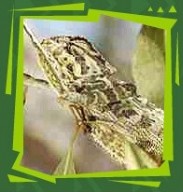
The flapnecked chameleon has a prehensile tail -- it acts like a fifth limb! It's fingers
are fused together, creating zygodactylous feet, or limbs that act like tree-gripping
devices. Being a chameleon also means it can actually change it's skin color to match
the surrounding area!
Another neat thing about flapnecked chameleons is their eyes, which operate individually.
That means they can use one eye to look at their food while eating and another to look out
for predators -- without getting a headache!
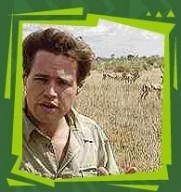
While I was trekking out in the plains, I came across a very interesting sight indeed: a
pack of Peter's gazelles. The interesting part was how all of them were males. They were
organizing and clustering because they were going to be sparring for females. The winner
of this fencing-with-horns match gets to claim the female!
In this habitat, Peter's gazelles serve as food for a lot of predators, including hyenas,
lions, and cheetahs. In fact, I spotted a pair of cheetahs waiting for mealtime. Despite
their seeming indifference, I wasn't fooled. Cheetahs are built for speed and have been
clocked running faster then 70 miles an hour!
I didn't have to go much farther to spot the world's largest bird -- the ostrich! These
fascinating birds are the tallest and also the fastest (up to 45 miles an hour!) in the
world. The ostrich does have to pay a price for its impressive size and speed: It cannot
fly.
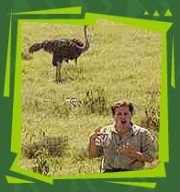
You can tell the gender of an ostrich by its color. The females are brown, so when they
are sitting on their nests during the day, they blend in with their surroundings.
I was lucky enough to discover the ostrich's nest right in front of the ostrich I was
observing. A single female can incubate 10 to 20 eggs at a time. In early stages of
their lives, ostrich babies are looked after by their parents. Once they get older, they
join the brood of the most dominant ostrich parents.
I did pass a group of baboons, but I didn't spend too much time with them because I picked
up the trail of one of the rarest animals in the world -- the black rhino! I followed the
tracks and was well rewarded.
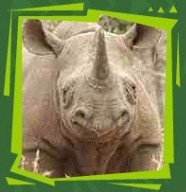
The black rhino uses a fingerlike lip that curls down to pull and tug on vegetation. This
wonderful creature is completely herbivorous, which means it eats only plants. Soon
it was time to move, because you don't want to get in the way of any kind of rhino -- and
I thought he'd spotted us!
A mere 10 to 20 years ago, the black rhinos living in Tsavo East National Park numbered
more than 20,000. These days their numbers have decreased to under 30. These magnificent
creatures have sadly been hunted for medicinal purposes -- some people believe the tissue
of the horns has medicinal value.
Wow! We found an acacia tree ripped to shreds -- the work of an African elephant! The
destruction of trees by African elephants prevents succession, or the growth of the plains
into a tall-tree forest. Knocking down those trees, the African elephants make space for
grass to grow, providing a habitat for antelope!
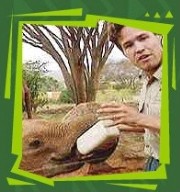
To cool themselves down, African elephants bathe in mud. The mud may not get them cleaner,
but it keeps their sensitive skin free of parasites and diseases.
African elephants can spend three fourths of their lives just eating! A large elephant
can eat up to 500 pounds of food a day!
I got to spend the rest of the day at the Tsavo East Elephant Orphanage helping feed and
care for a baby elephant. The goal of the orphanage is to return these animals to the wild,
which means treating them like wild creatures and nurturing them at the same time.
After stopping at the Tsavo East Elephant Orphanage for the night, it was time to move on
to Hell's Gate to look for or feature creature -- the rock hydrax. Although these
creatures look like rodents, they are more closely related to elephants! They spend their
lives eating greens and the leaves that shoot up between the rock in the rocky areas where
they live.
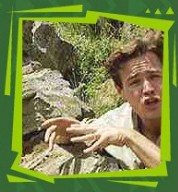
Hydrax use the cavities of rocks for shelter and protection from predators. The one glitch
is African rock pythons, who wait inside the rocks!
An amazing fact: Rock hydrax have a hard time regulating their body temperatures. Instead,
they have to sit in the sun when cold, turning their bodies into solar panels to warm up.
If hydrax get hot, they find some shade. A fascinating creature, the rock hydrax.
Until next time, stay wild!
Your friend,
Jeff
Back to the Journal Page